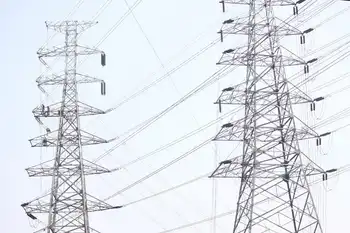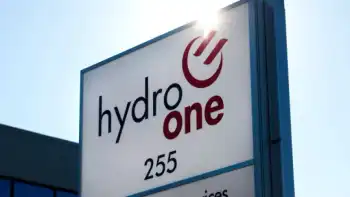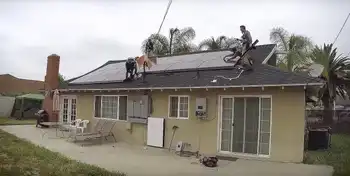Going solar harder than it looks
By Alamosa Journal
Substation Relay Protection Training
Our customized live online or in‑person group training can be delivered to your staff at your location.

- Live Online
- 12 hours Instructor-led
- Group Training Available
Energy here, from the sun, is free, abundant and clean. For generations of farmers, and the hippies in the 1970s who went off the grid with their sun-powered water-heaters, and most recently the large-scale solar companies that have come looking for a new kind of harvest in one of the nationÂ’s sweet spots for renewable energy, the sun is an anchor of life.
But perhaps nothing is simple or easy in energy, and the bitter fight over solarÂ’s future here in south-central Colorado is providing an object lesson that the path to a new energy future will not be without its own messy entanglements of politics, power and place.
Jason KirkpatrickÂ’s farm is a good place to start.
Mr. Kirkpatrick, like most farmers in the San Luis Valley along Colorado’s border with New Mexico, uses lots of electricity — $10,000 a month in peak irrigation season to power the pumps and sprayers for his potatoes, wheat, barley and alfalfa. But high costs do not ensure reliability: power comes into the valley at one point, over a mountain pass on lines that are old and near capacity.
Solar development also depends on getting the energy to more distant markets. A 200-acre solar field project is under construction about a mile from Mr. KirkpatrickÂ’s house.
ThatÂ’s where a proposed 140-mile transmission line, a billionaire rancher/hedge fund manager, and questions about who will benefit and who will be harmed by energyÂ’s trajectory, collide.
The $180 million line, which has been planned for more than a decade, is meant to solve many of the valley’s problems in one fell swoop — more power in, more power out, more economic development in one of the poorer corners of the state. The billionaire, Louis Moore Bacon, bought the 172,000-acre Trinchera Ranch in 2007. He opposes the part of the line that will cross his property.
Last month, the lead company in the power line project, Xcel Energy, said that delays in the project — blamed on Mr. Bacon and his lawyers — had undermined potential development of solar power in Alamosa.
“We may have to go somewhere else,” said a spokesman for Xcel, Mark Stutz.
A spokesman for Mr. Bacon, Cody Wertz, said he believed the utility was reconsidering the viability of solar power for economic rather than legal reasons, and using Mr. Bacon as a scapegoat because backing away from renewable energy is not politically popular.
“If we’re going to back up from solar, who do we lay that blame on?” Mr. Wertz said, describing Xcel. “Oh it’s easy, the billionaire.”
The state legislature in Denver added another wrinkle to the story when it changed ColoradoÂ’s renewable energy statute this spring. The new law raised to 30 percent, from 20 percent, the proportion of their production that investor-owned energy companies must generate from renewable sources by 2020.
But the law also repealed a specific set-aside requirement for solar power, substituting instead a mandate that 3 percent of the power supply come from small-scale and locally produced and consumed energy, called distributed generation, which might be solar or might not.
In any case, locally made and consumed energy will not require a giant power line to move it long distance. Xcel has said it will file a revised plan for its energy portfolio in June.
Whether Mr. Bacon is to be credited or blamed for the shift in electricityÂ’s future here is equally a matter of local debate.
Some residents say that scuttling or reducing in scale a giant power transmission line could ultimately be a good thing, if it encourages smaller-scale development.
“The true potential is keeping the power generation local and keeping it small enough so that local economies can benefit,” said Wayne Caldwell, chief financial officer at the Monte Vista Cooperative, whose members include farmers and residents.
Others, like Mr. Kirkpatrick, 54 and a third-generation farmer, believe that the electricity line is crucial to the valleyÂ’s future, and that powerful interests have once again gotten their way.
“The big guys can fight it,” he said. “We’ve seen that.”
Small-scale solar energy production has a long history here. As far back as the early 1980s, farmers and back-to-the-land hippies, who still share and define the valleyÂ’s culture, had built the highest per-capita concentration of home-based solar installations in the country, according to a federal study.
But at the nonprofit energy utility, the San Luis Valley Rural Electric Co-op, John R. Villyard, the company’s chief executive, said that solar power — whoever produces it — does not really help with the reliability troubles he faces. In peak irrigation season, he said, farmers with thirsty crops cannot be at risk of having a cloudy day that does not produce enough electricity.
A truly dependable system requires more so-called base-load production, he said — power plants producing a constant stream of electricity, which in Colorado mostly comes from burning coal or natural gas. Paradoxically, Mr. Villyard said that reducing solar’s role — if it leads to a smaller, less controversial electricity line that could actually get built — might in fact help bring in the base-load supply he needs.
Meanwhile, complications of self-interest, aesthetics and politics continue to swirl. Some farmers are negotiating to sell land for solar development, or eyeing their neighbors who already have. Mr. Kirkpatrick sold 320 acres to the SunPower Corporation, based in California, which is building the project near his home — the $880,000 from the sale, he said, provided his mother with a retirement plan.
A spokeswoman for SunPower said the project — 19 megawatts, or enough to power about 14,000 average American homes — would not be affected by delays or changes in the proposed power transmission line because the company had contracted to sell its electricity into existing lines.
But the crosswinds are still twisting the lives of people like Debbie and Sean Canada. The Canadas are not farmers, and so have no land to sell. Their neighbor, though, is selling land where he currently cultivates carrots, yards away from their back porch. This could reduce the value of their home by as much as 50 percent, according to a recent appraisal, Ms. Canada said.
But she had heard in the last few weeks that the project had been delayed for financial reasons.











